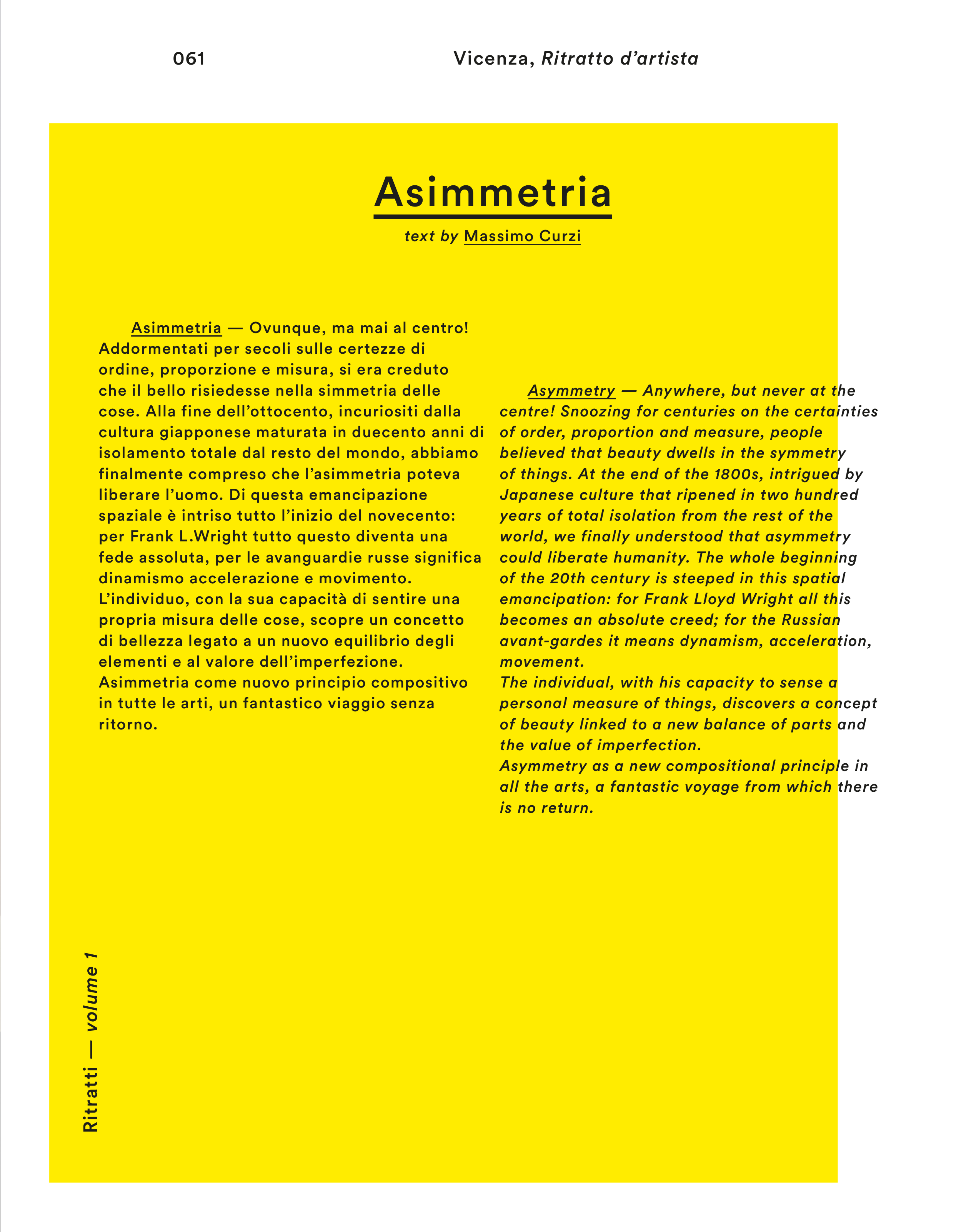061
Ritratti — volume 1
Asimmetria — Ovunque, ma mai al centro!
Addormentati per secoli sulle certezze di
ordine, proporzione e misura, si era creduto
che il bello risiedesse nella simmetria delle
cose. Alla fine dell’ottocento, incuriositi dalla
cultura giapponese maturata in duecento anni di
isolamento totale dal resto del mondo, abbiamo
finalmente compreso che l’asimmetria poteva
liberare l’uomo. Di questa emancipazione
spaziale è intriso tutto l’inizio del novecento:
per Frank L.Wright tutto questo diventa una
fede assoluta, per le avanguardie russe significa
dinamismo accelerazione e movimento.
L’individuo, con la sua capacità di sentire una
propria misura delle cose, scopre un concetto
di bellezza legato a un nuovo equilibrio degli
elementi e al valore dell’imperfezione.
Asimmetria come nuovo principio compositivo
in tutte le arti, un fantastico viaggio senza
ritorno.
Asymmetry — Anywhere, but never at the
centre! Snoozing for centuries on the certainties
of order, proportion and measure, people
believed that beauty dwells in the symmetry
of things. At the end of the 1800s, intrigued by
Japanese culture that ripened in two hundred
years of total isolation from the rest of the
world, we finally understood that asymmetry
could liberate humanity. The whole beginning
of the 20th century is steeped in this spatial
emancipation: for Frank Lloyd Wright all this
becomes an absolute creed; for the Russian
avant-gardes it means dynamism, acceleration,
movement.
The individual, with his capacity to sense a
personal measure of things, discovers a concept
of beauty linked to a new balance of parts and
the value of imperfection.
Asymmetry as a new compositional principle in
all the arts, a fantastic voyage from which there
is no return.
Asimmetria
text by Massimo Curzi
Vicenza, Ritratto d’artista







